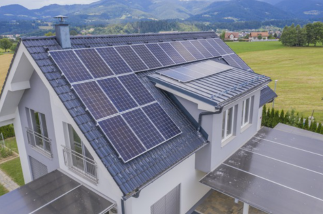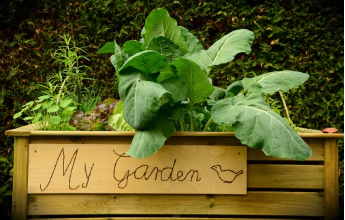How To Start Sustainable Living Whilst Working From Home
If you are a Work at Home Mum who wants to do your part in preserving the environment, then this is the perfect guide to show you how to start sustainable living whilst working from home.
You can take various approaches to kick start your eco-friendly journey at home. This can include different ways of conserving energy at home, optimizing energy consumption, and growing your own food.
This article will cover these practical methods so you can use to become a more sustainable Work at Home Mum. When you apply these sustainable living methods, you will reduce your carbon footprint, teach your kids valuable lessons for life and get a significant reduction in your bills.
Ways of Conserving Energy While Working at Home
You may have noticed that working from home has increased your energy consumption since you are spending a lot more time in your own home office rather than heading out to work each day.
That’s why building positive habits to save energy at home will give you long-term benefits that will not only reduce your carbon footprint but also your electricity bills. Here are three great ideas that can help improve your energy consumption.
1. Utilise Rooms with Natural Light and Airflow
While working in the comfort of your bedroom might seem enticing, it often requires you to keep the lights and air conditioner running for most of the day depending on your room set up.
To reduce your energy consumption, try working in a spot with excellent exposure to natural light – preferably outside on the porch or next to an open window. Open your curtains or blinds to allow natural light to stream into the room and open your windows to feel the gentle breeze and fresh air.
By positioning yourself in a naturally lit area with reliable airflow, you will significantly reduce your electric bills by decreasing your reliance on lights and air conditioning during the day.
2. Get Solar Panels to Power Your Gadgets

While solar energy is still largely incapable of replacing fossil-based electricity, it can significantly reduce your carbon footprint. If you have the budget to spare, you can install a large-scale solar panel system to reduce or even eliminate your electricity bill.
But if you are still baby-stepping into being sustainable at home, you can start by getting a set of portable solar panels that you can use to power up your gadgets and small home appliances. All you need is the power of the sun and you are well on your way!
3. Install Solar Tubes
Solar tubes or sun lights can also be a great alternative to reduce the need for using lighting during the day. These light-channeling tubes are great options if your house lacks sunlight on the inside but has direct exposure to sunlight throughout the day. During sunny days, the light produced by solar tubes is bright enough that you won’t need to rely on electricity to light up your room.
However, be aware that solar tubes only work for rooms with direct access to the roof. That means if you live in a two-story house, you can’t use solar tubes to brighten up the rooms on the first floor.
Optimizing Power Consumption While Working at Home

If technology and electricity are inseparable from your daily routine, you can still start sustainable living by practicing energy optimization. Energy optimization means preventing any trickle of electricity from getting wasted. Here are some methods that you can apply to achieve optimized energy consumption.
1. Activate Battery Saver Options on Your Gadgets
Laptops, tablets, and Smart Phone’s always come with low-power consumption options that automatically trigger when the battery drops to a certain level. You can always opt to use the low-power mode to reduce unneeded battery consumption on your gadgets.
Battery saver options typically prevent apps or software from running in the background. You can provide permission to some essential productivity apps to still run as you require.
2. Turn on Auto Sleep Options
Like a battery saver option, you can set almost all modern gadgets to go to sleep every time they go idle for a certain period. Turning on auto sleep means you don’t have to worry about your laptop’s battery depleting when you leave it to prepare your lunch or go to the bathroom.
3. Use Low-Power Appliances
Having an eco-friendly setting in today’s technology is almost a necessity for all high-end products, especially home appliances.
While they might cost a little more upfront, having the eco-friendly tag on your home appliances can lower your electricity bills in the long run. You should consider picking the eco-friendly options for home appliances that are constantly running like your fridge and freezer.
Growing Your Food While Working at Home
 If you are new at the whole working at home situation, you might find yourself ordering more takeouts or fast food than usual especially if you are lacking a nice variety of foods to choose from at home. While takeouts are convenient, it does go against the principles of sustainable living.
If you are new at the whole working at home situation, you might find yourself ordering more takeouts or fast food than usual especially if you are lacking a nice variety of foods to choose from at home. While takeouts are convenient, it does go against the principles of sustainable living.
Growing some fruits and vegetables in your backyard garden is a perfect solution – but what kinds should you grow? Some plants are so easy to grow and can be so fruitful that many work-at-home mums turn their hobby into an opportunity to make money by selling their fruit and vegetables at the local market.
But where to start? If you are a beginner, I suggest you start small and learn some gardening basics before diving right in to a big garden that will take lots of time and money.
A beginners vegetable garden should start with no more than five different types of vegetables. Choose vegetables that your family will love (even the fussy eaters). We have listed some of the easier veggies to grow in your garden below. You will yield great variety and volume with your produce and you will soon learn how much your family can eat and what you can share (or sell!) to others.
1. Radish, Salad Leaves, and Spinach for Quick Harvest Vegetables
 Radish and spinach are among the fastest-growing vegetables that you can use to help you live more sustainably. You can harvest radish as early as 25 days after its sowing time. Salad leaves need an even shorter 21-days before you can harvest them, and spinach takes around 30 days to grow fully.
Radish and spinach are among the fastest-growing vegetables that you can use to help you live more sustainably. You can harvest radish as early as 25 days after its sowing time. Salad leaves need an even shorter 21-days before you can harvest them, and spinach takes around 30 days to grow fully.
These three vegetables are the most straightforward options if you are still beginning to learn the ways of home gardening, but you can use them in various home-cooked dishes. Once you get to know the ropes, you can start planting more long-term plants like carrots, bell peppers, and cucumbers. It is also a great way to get your kids involved in the fun of gardening and learning all about where good, healthy food comes from.
2. Raspberries for Easy-Care Garden Fruits
Berries are among the least complicated fruits to grow in your backyard garden. Even if you don’t have a garden, you can even grow them in containers. Aside from the low maintenance need, raspberries also provide plenty of delicious fruits when harvest time comes. The kids will love picking the berries straight from the plant and eating them!
Conclusion
Sustainable living takes some getting used to, so don’t stress too hard if you don’t get the hang of it right away. If you do it consistently, you will be the most energy-saving family in the whole neighborhood and you will soon want to start sharing these tips with your family and friends.
You can start your sustainable living journey by applying these methods to your daily routine. Once you get the hang of it, there are many other fun strategies and tips on how to start sustainable living to learn and enjoy – but for now, keep it simple and start saving our planet!

Amanda Henshaw is a busy Work at Home Mum who has spent years converting the family home into a sustainable space. Amanda and her partner now have a passion for passing on their knowledge and experience to their children and other likeminded individuals so they can also create positive, sustainable change for the environment. For more tips on sustainable living and renewable energy at home check out their website Natural Power Save.




